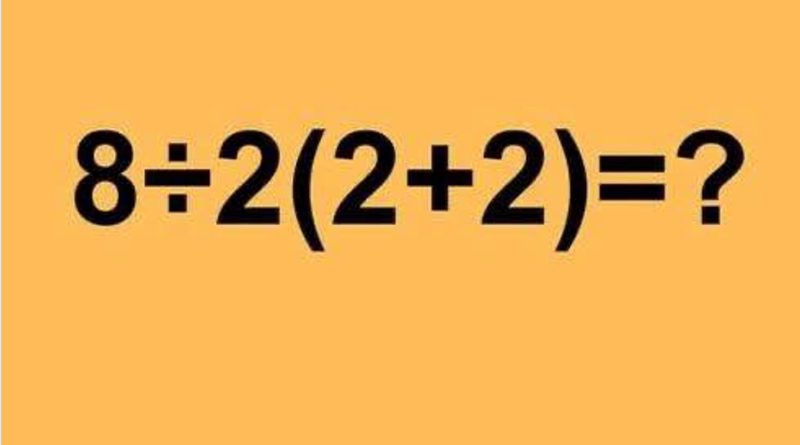Math problem from 2019 divides the internet.
In a time when social media is buzzing with divisive discussions, it’s surprising to see a math problem ignite such intense debate. Yet, one particular equation managed to do just that.
In 2019, what appeared to be a straightforward math equation turned into a viral sensation among social media users, leading to what some described as a “civil war” within the Popular Mechanics office.
This situation transcended mere mathematics; it became a cultural event, highlighting the varied ways people understand rules and the passionate defenses they offer for their viewpoints.
Let’s dive into the details and uncover the reasons behind the controversy surrounding this math problem.
Math can sometimes be a bit tricky.
Consider the problem:
8 ÷ 2(2 + 2)
At first, it looks simple, but that simplicity can be misleading. Depending on how you apply the order of operations, you could arrive at either 1 or 16 as the answer.
The argument for 16
Following the PEMDAS/BODMAS rule (Parentheses/Brackets, Exponents/Orders, Multiplication and Division, Addition and Subtraction), we should tackle the equation in the order indicated by the acronym, starting with parentheses, then exponents, and proceeding through the other operations from left to right.
This means we first solve the 2 + 2 in the parentheses, which gives us 8 ÷ 2 x 4. Next, we focus on the leftmost operation, so we handle 8 ÷ 2 before moving on to 2 x 4.
This results in 4, leading us to 4 x 4, which equals 16.
2 + 2 = 4
8 ÷ 4 = 4
4 x 4 = 16
However, many in the online community, including some knowledgeable mathematicians, disagree with this interpretation.
Mike Breen from the American Mathematical Society Public Awareness Office mentioned that the phrasing is unclear.
While collaborating with Popular Mechanics to tackle this equation, Breen noted, “In mathematics, ambiguities often arise. Mathematicians strive to establish clear rules. Following the strict order of operations, the answer would be 16, but I wouldn’t reprimand someone for saying 1.”
The case for 1
How did they arrive at 1 as the solution?
The team adhered to the PEMDAS rule but had a different interpretation. They agreed that the 2 + 2 within the parentheses should be calculated first, but they contended that the resulting sum should still be viewed as if it were in parentheses, effectively rewriting the equation as 8 ÷ 2(4), which leads to 1.
Commenting on this significant debate, Rhett Allain, Ph.D., Associate Professor of Physics at Southeastern Louisiana University, likens it to the famous question, “What color is this dress? Blue and black or gold and white?”
Rhett believes the correct answer is 16.
“This isn’t purely math; it’s about conventions. Just like we have rules for writing, we have conventions for mathematical expressions. However, there are variations. Some people spell it ‘gray’ while others prefer ‘grey.’” He continues, “We still grasp the meaning. Personally, I would present this more clearly to avoid any misunderstandings… That way, no one can misinterpret it.”
Whether you support team 16 or team 1, this viral debate highlights one undeniable truth: math has never been so perplexing or entertaining! So, which side do you take? Share your thoughts in the comments!
